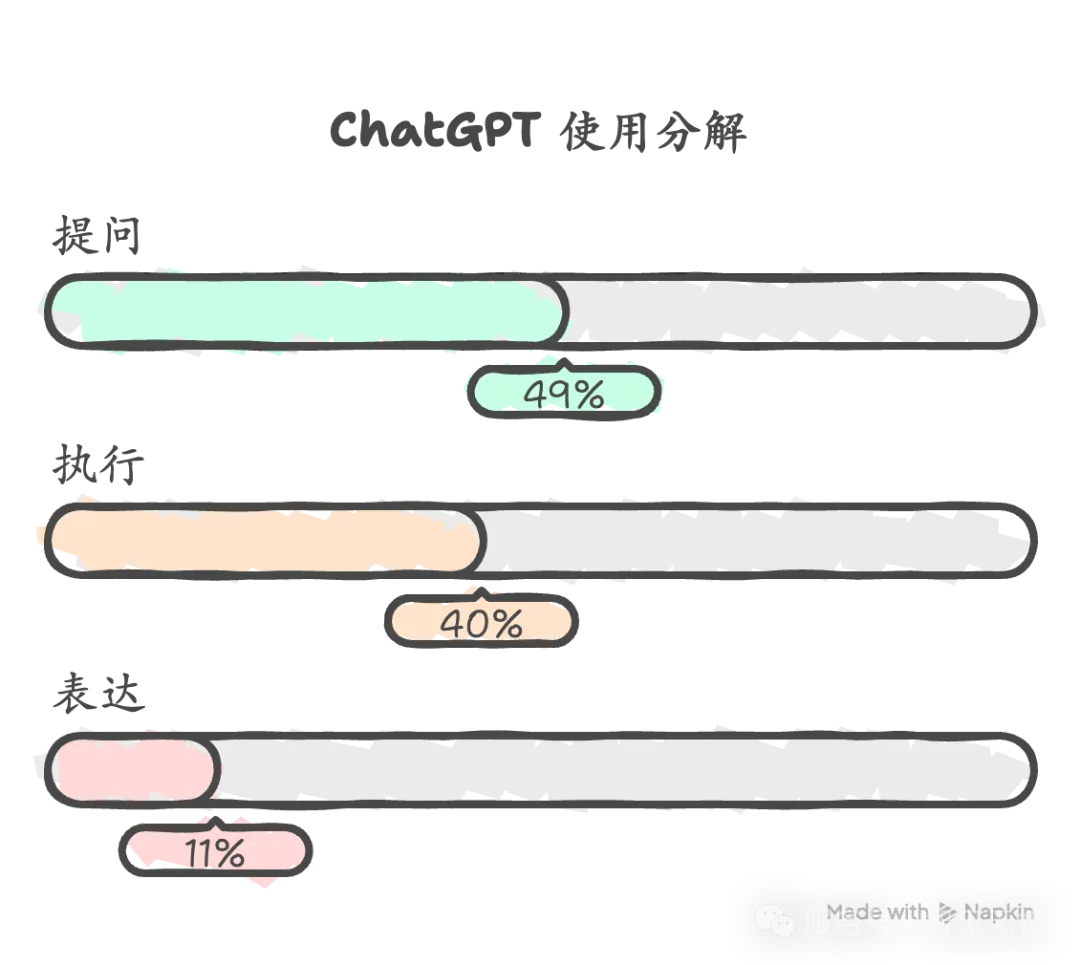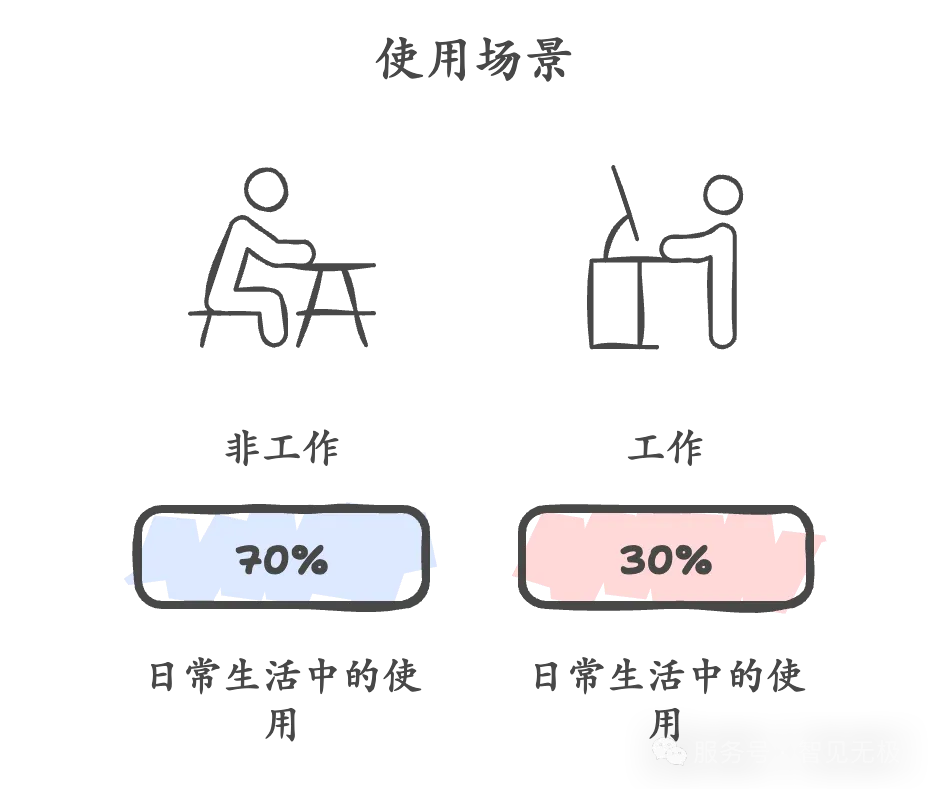OpenAI报告:人们如何使用ChatGPT
OpenAI发布的长篇论文,详细阐述了人们如何使用ChatGPT,以下是原文及翻译
我们发布了迄今为止关于 ChatGPT 消费者使用情况的最大规模研究,首次全面展示了这一广泛普及的技术如何在个人与工作场景中创造经济价值。
研究发现,ChatGPT 的用户群体已经从早期的特定人群逐渐扩展,尤其是性别差距正在缩小;
大多数对话集中在日常事务,比如获取信息和实用指导;同时,使用方式也在不断演变,不仅提升了工作生产力,也在个人生活中创造价值。
这种日益广泛的使用,印证了我们的一种信念:AI 的获取应该像基本权利一样普惠,让每个人都能借助它释放潜能、塑造未来。
The study, a National Bureau of Economic Research (NBER) working paper by OpenAI’s Economic Research team and Harvard economist David Deming, draws on a large-scale, privacy-preserving analysis of 1.5 million conversations to track how consumer usage has evolved since ChatGPT’s launch three years ago. Given the sample size and 700 million weekly active users of ChatGPT, this is the most comprehensive study of actual consumer use of AI ever released. Notably, while the study covers consumer plans only, the results still highlight the creation of economic value both at work and outside of work.

这项研究由 OpenAI 经济研究团队和哈佛大学经济学家 David Deming 共同完成,并以美国国家经济研究局(NBER)工作论文的形式发表。
研究基于 150 万条对话的隐私保护型大规模分析,追踪了 ChatGPT 自三年前上线以来的使用演变。
鉴于样本规模,以及 ChatGPT 目前每周超过 7 亿的活跃用户,这是迄今为止最全面的 AI 消费者使用研究。虽然研究仅覆盖了消费级使用计划,但结果仍凸显了其在工作与生活中的经济价值。
Some of the paper’s key takeaways: Who’s using it
谁在用
Usage gaps are closing as we increasingly democratize AI. As of mid-2025, ChatGPT’s early gender gaps have narrowed dramatically, with adoption resembling the general adult population. In January 2024, among users with names that could be classified as either masculine or feminine, 37% had typically feminine names. By July 2025, that share had risen to more than half (52%).
随着 AI 的普及,使用差距正在缩小。到 2025 年中期,ChatGPT 早期的性别差距大幅缩小,用户群体结构逐渐接近整体成年人口。
比如,在 2024 年 1 月,用户名可识别性别的用户中,只有 37% 属于女性;到 2025 年 7 月,这一比例已上升到 52%。
ChatGPT has also become a broadly accessible global tool, with especially rapid growth in low- and middle-income countries. By May 2025, ChatGPT adoption growth rates in the lowest income countries were over 4x those in the highest income countries.
ChatGPT 也正在成为一款全球可及的工具,在中低收入国家的增长尤为迅速。到 2025 年 5 月,最低收入国家的 ChatGPT 用户增长率是最高收入国家的4 倍以上。
What they’re using it for
用来做什么
ChatGPT consumer usage is largely about getting everyday tasks done. Three-quarters of conversations focus on practical guidance, seeking information, and writing—with writing being the most common work task, while coding and self-expression remain niche activities.

大多数消费者使用 ChatGPT 是为了完成日常任务。四分之三的对话与实用指导、信息获取和写作相关——其中写作是最常见的工作场景,而编程和自我表达则相对小众。
Patterns of use can also be thought of in terms of Asking, Doing, and Expressing. About half of messages (49%) are “Asking,” a growing and highly rated category that shows people value ChatGPT most as an advisor rather than only for task completion. Doing (40% of usage, including about one third of use for work) encompasses task-oriented interactions such as drafting text, planning, or programming, where the model is enlisted to generate outputs or complete practical work. Expressing (11% of usage) captures uses that are neither asking nor doing, usually involving personal reflection, exploration, and play.

🌟从交互方式看,可以分为三类:「提问、执行、表达」。
提问 (Asking):占约 49%,这是一个快速增长且评分很高的类别,说明用户更看重 ChatGPT 作为顾问的角色,而不仅仅是完成任务。
执行 (Doing):占约 40%,包括文本撰写、规划、编程等任务导向的互动,其中约三分之一与工作相关。
表达 (Expressing):占约 11%,主要是个人反思、探索和娱乐类用途。
How use is evolving
使用的演变
ChatGPT’s economic impact extends to both work and personal life. Approximately 30% of consumer usage is work-related and approximately 70% is non-work—with both categories continuing to grow over time, underscoring ChatGPT’s dual role as both a productivity tool and a driver of value for consumers in daily life. In some cases, it’s generating value that traditional measures like GDP fail to capture.
ChatGPT 的经济影响同时体现在工作和个人生活。

大约 30% 的使用与工作相关,70% 属于非工作场景——而且两类都在持续增长,凸显了它既是生产力工具,又是日常生活价值创造者的双重角色。
在某些情况下,它创造的价值甚至超出了传统 GDP 指标能衡量的范围。
A key way that value is created is through decision support: ChatGPT helps improve judgment and productivity, especially in knowledge-intensive jobs. And as people discover these and other benefits, usage deepens—with user cohorts increasing their activity over time through improved models and new use-case discovery.
一个重要的价值创造方式是——决策支持:ChatGPT 能提升判断力和生产效率,尤其在知识密集型工作中作用显著。
随着用户不断发现这些价值,使用深度也在增加——新模型和新场景的推出,让用户群体的活跃度持续走高。

Together, these findings from the largest study of ChatGPT consumer usage to date show not only who is using AI and what they’re using it for, but also how it is creating real economic value that is increasingly central to people’s work and everyday lives.
这项迄今最大规模的 ChatGPT 消费者使用研究揭示了:谁在用 AI、用它做什么,以及它如何在工作和生活中创造真实的经济价值。
阅读完整论文:想了解研究结果、方法和稳健性检验,请参见完整的 NBER 工作论文(https://www.nber.org/papers/w34255)
随着产品功能迭代,我们也期待进一步观察结果的变化。
